These poems and photos address climate change in Central New York in winter and early spring.
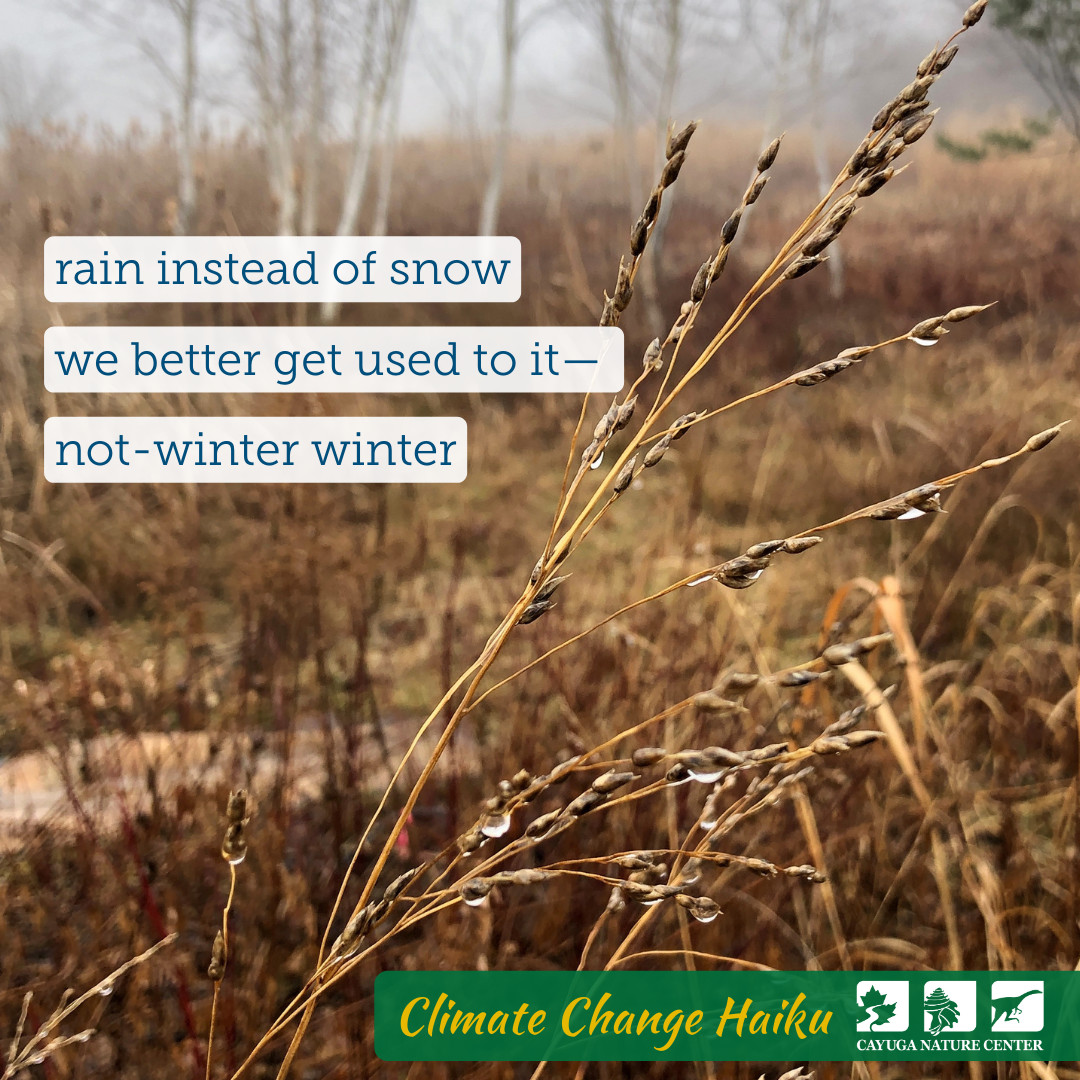
In Central New York, climate models project increasingly more rain rather than snow in winter as our climate warms.
You can find climate projections on the U.S. Climate Resilience Toolkit's tool The Climate Explorer. For example, see how Central New York is likely to experience fewer days below freezing in the future. The projections here show how the number of days per year where the maximum temperature is below freezing in Tompkins County, NY is projected to change over the 21st century.

Small mammals in Central New York depend on snow for a place to hide from predators, and for its thermal insulation.
Learn more about the effects of climate change on wildlife in Central New York in PRI's pamphlet Climate Change and Winter.
Photo above by xulescu_g (CC BY-SA 2.0) via Flickr
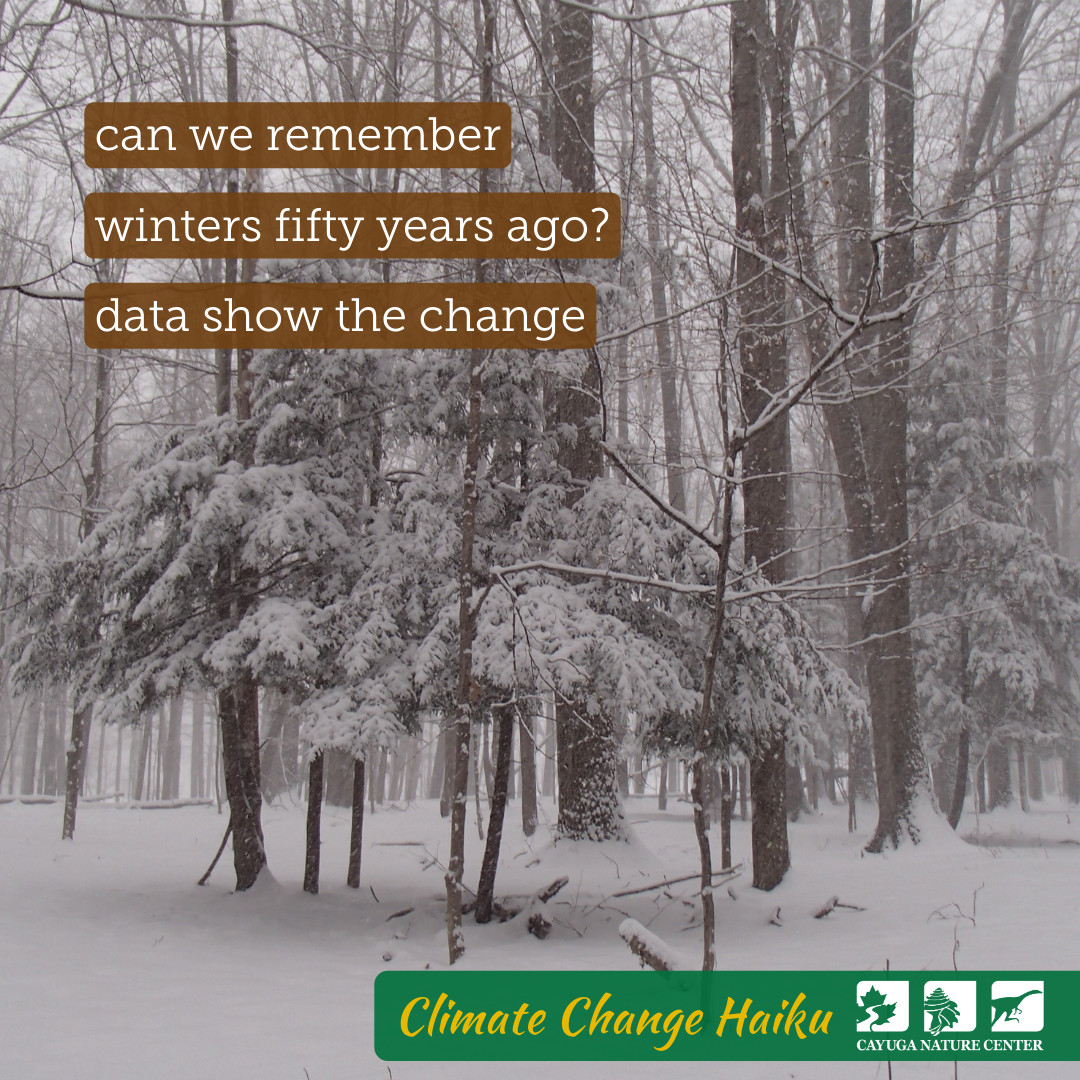
It can be hard to remember what a typical winter was like more than a few years ago. A study (Moore et al., 2019) found that most people's perceptions of weather they consider to be normal comes from memories of 2 to 8 years in the past.
Fortunately, scientists have been collecting high-quality weather data for over a hundred years, so we have a record of past climate in our region. The Northeast Regional Climate Center at Cornell University is an excellent source of data.
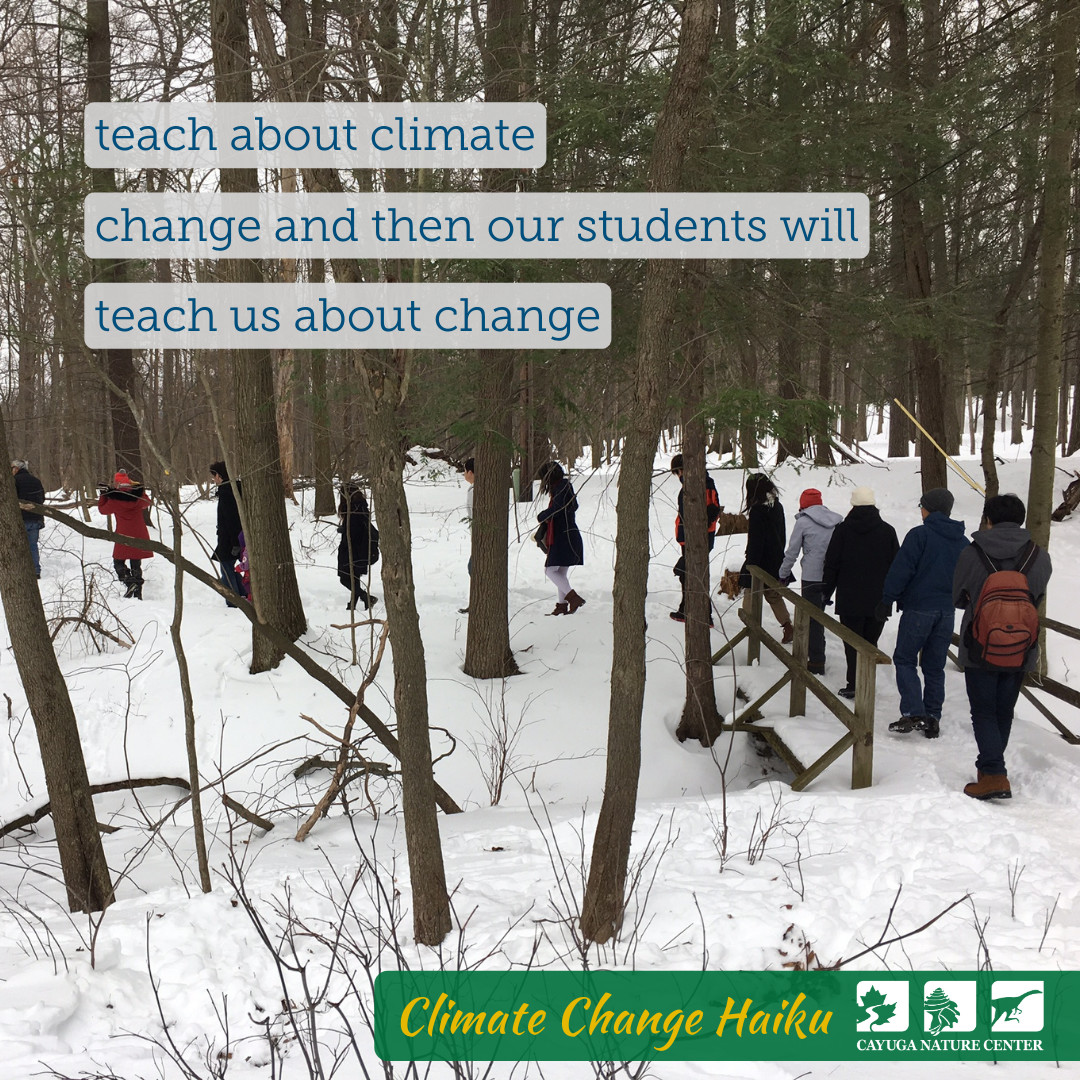
High quality climate change education creates scientifically literate, informed people who have the tools and motivation to take action.
A study (Cordero et al., 2020) of people who had taken a college-level climate change course found that participants made environmentally-friendly choices years after taking the course, and on average, reduced their carbon emissions by almost 3 tons per year.
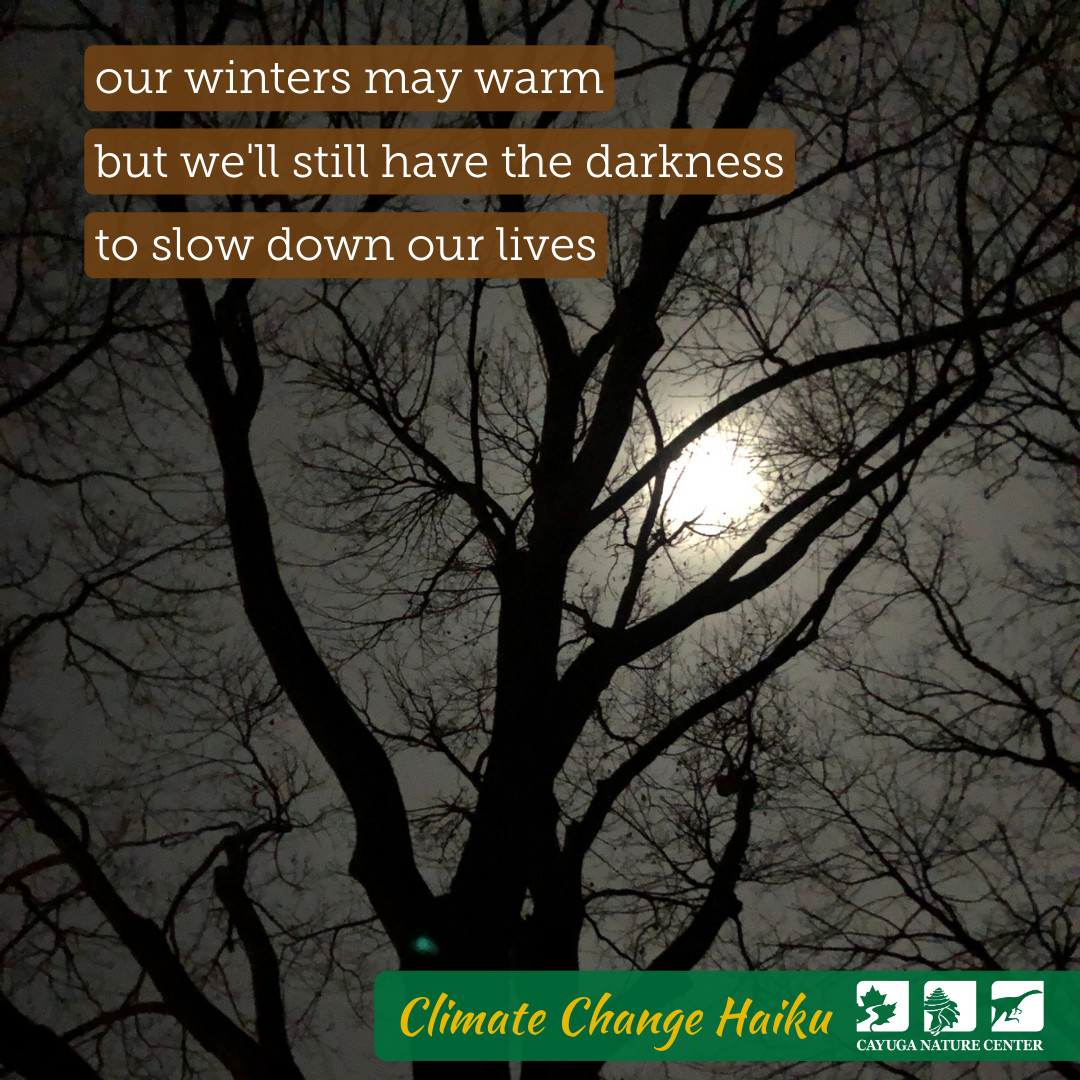
The long, winter nights in Central New York are due to the Earth's tilt away from the sun during the Northern hemisphere winter. Winter nights at higher latitudes (closer to the pole) are even longer than ours.
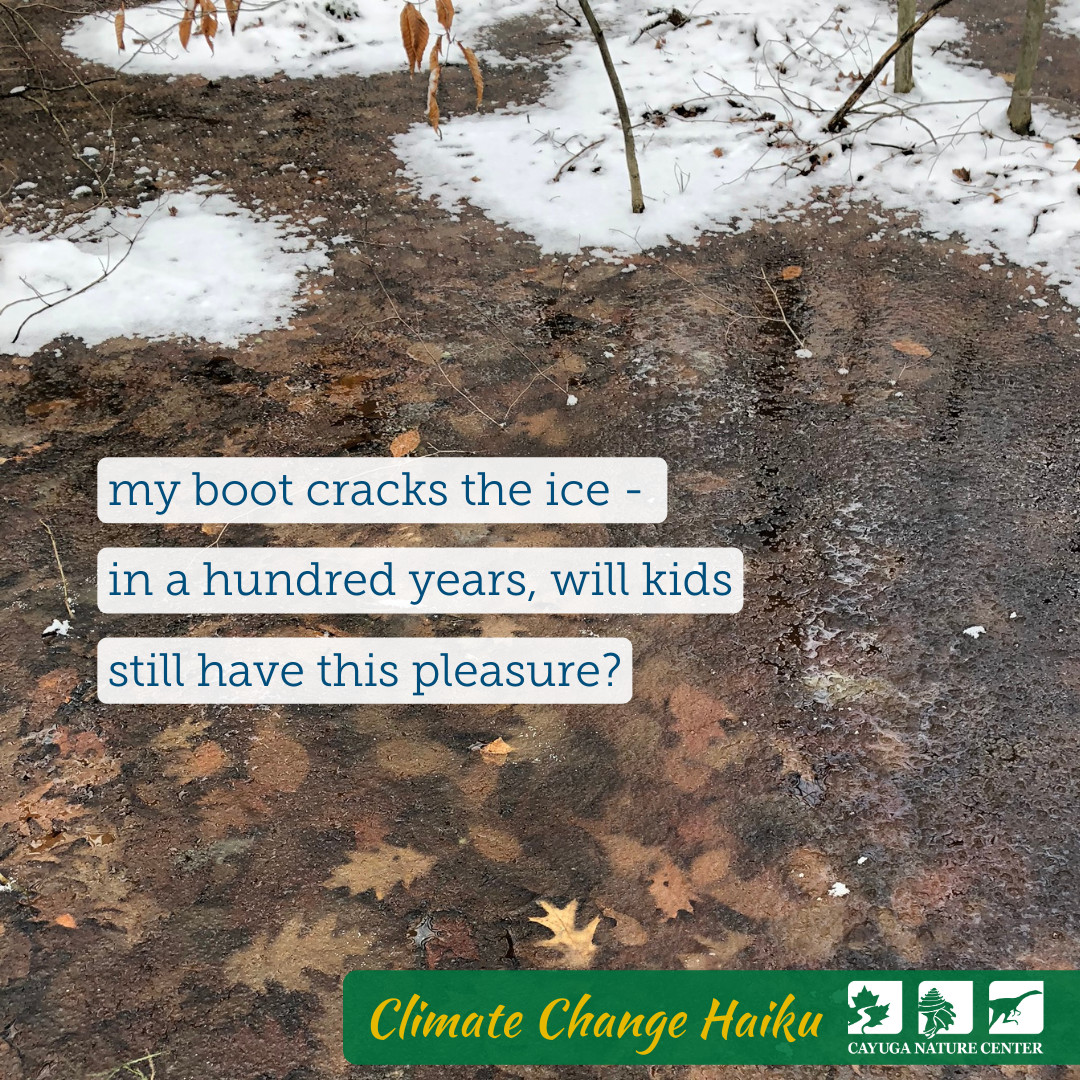
A simple pleasure of winter is looking through the ice on a frozen puddle to see what is trapped beneath it, and trying to crack the ice.
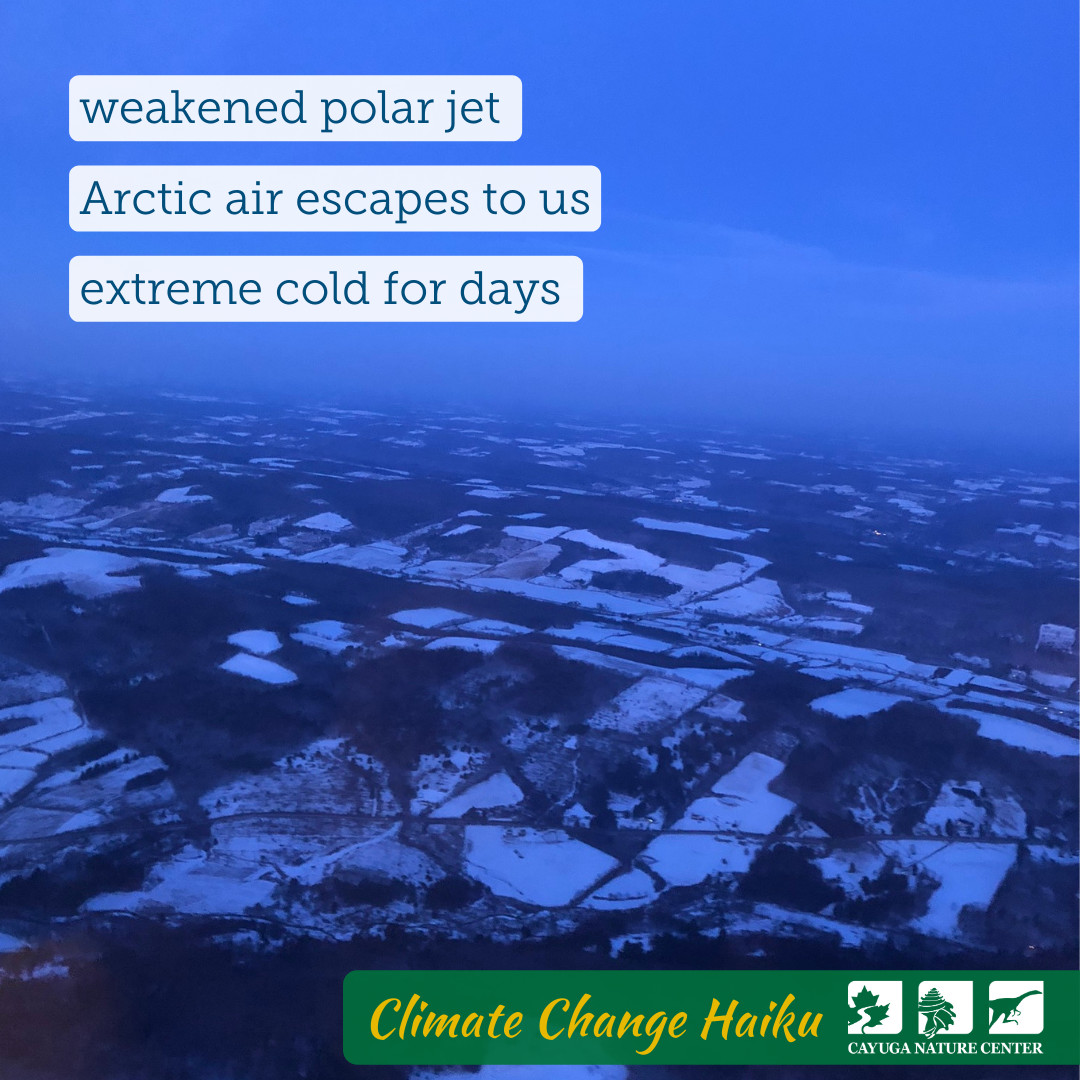
Central New York winters are warming on average, but in recent years we've sometimes had prolonged periods of extreme cold. One explanation for this is that the Arctic is warming more rapidly than equatorial regions, and this unequal warming is weakening and slowing down the winds known as the jet stream. As a result, cold Arctic air can sometimes dip down to our region and beyond, keeping temperatures extremely low for many days.
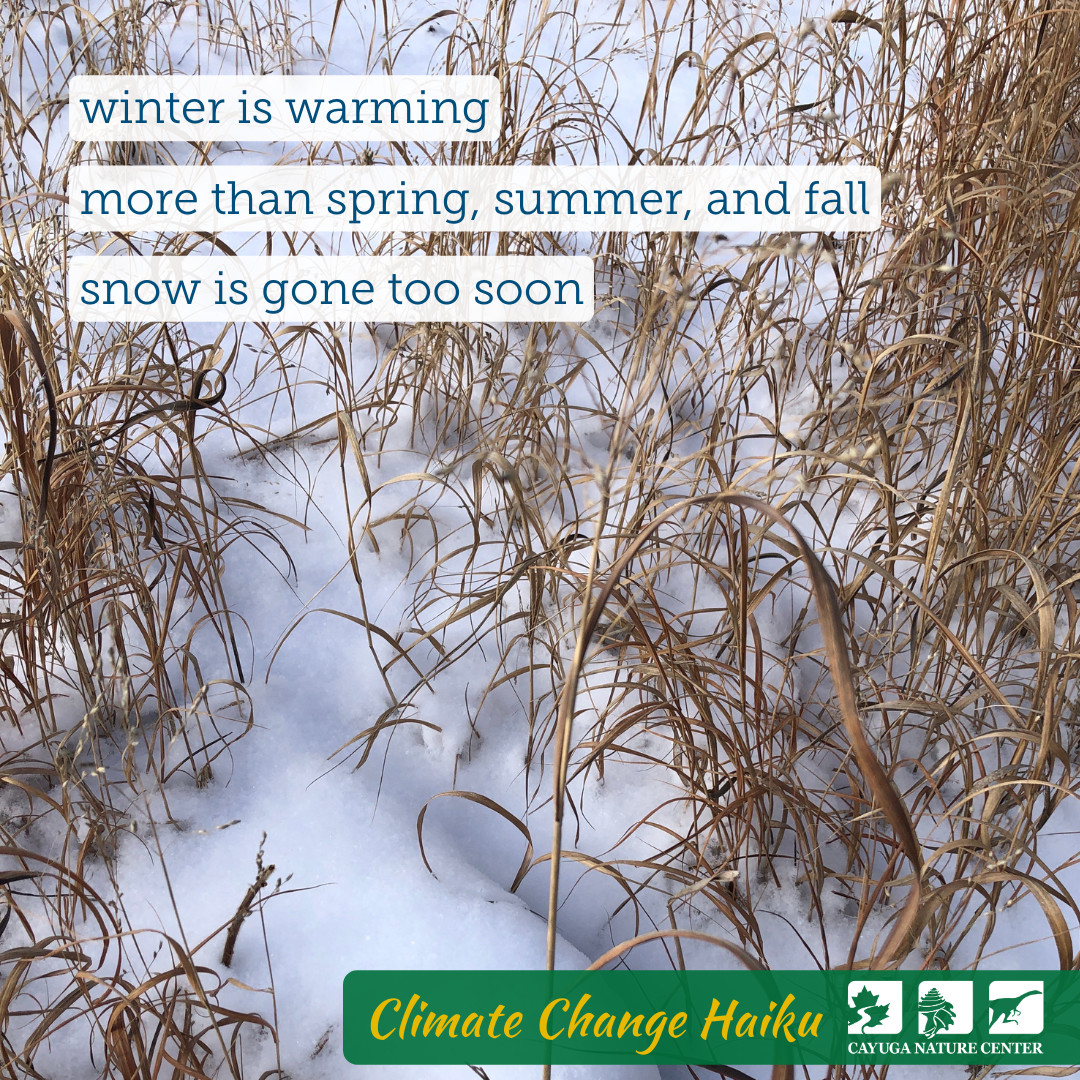
Snow on the roads and sidewalks can make driving and walking difficult, but snow is beautiful. Snowpack, a buildup of snow, is an important source of water in the spring and summer. With more warm winter days than in the past, the snow cover in New York State is more likely to melt away quickly than in the past.
Learn more about how snowfall and snow cover are projected to change in the future from the New York State Climate Impacts Assessment (2024).

Our carbon footprint is the total amount of carbon dioxide, methane, and other carbon-containing gases that we put into the atmosphere as a result of our activities. Most of our carbon footprint comes from burning oil, natural gas, and coal. These gases can persist in the atmosphere for around ten years (methane) to tens of thousands of years (some fluorinated gases).
Learn more about greenhouse gases on the Digital Encyclopedia of Earth Science and from the U.S. Environmental Protection Agency.
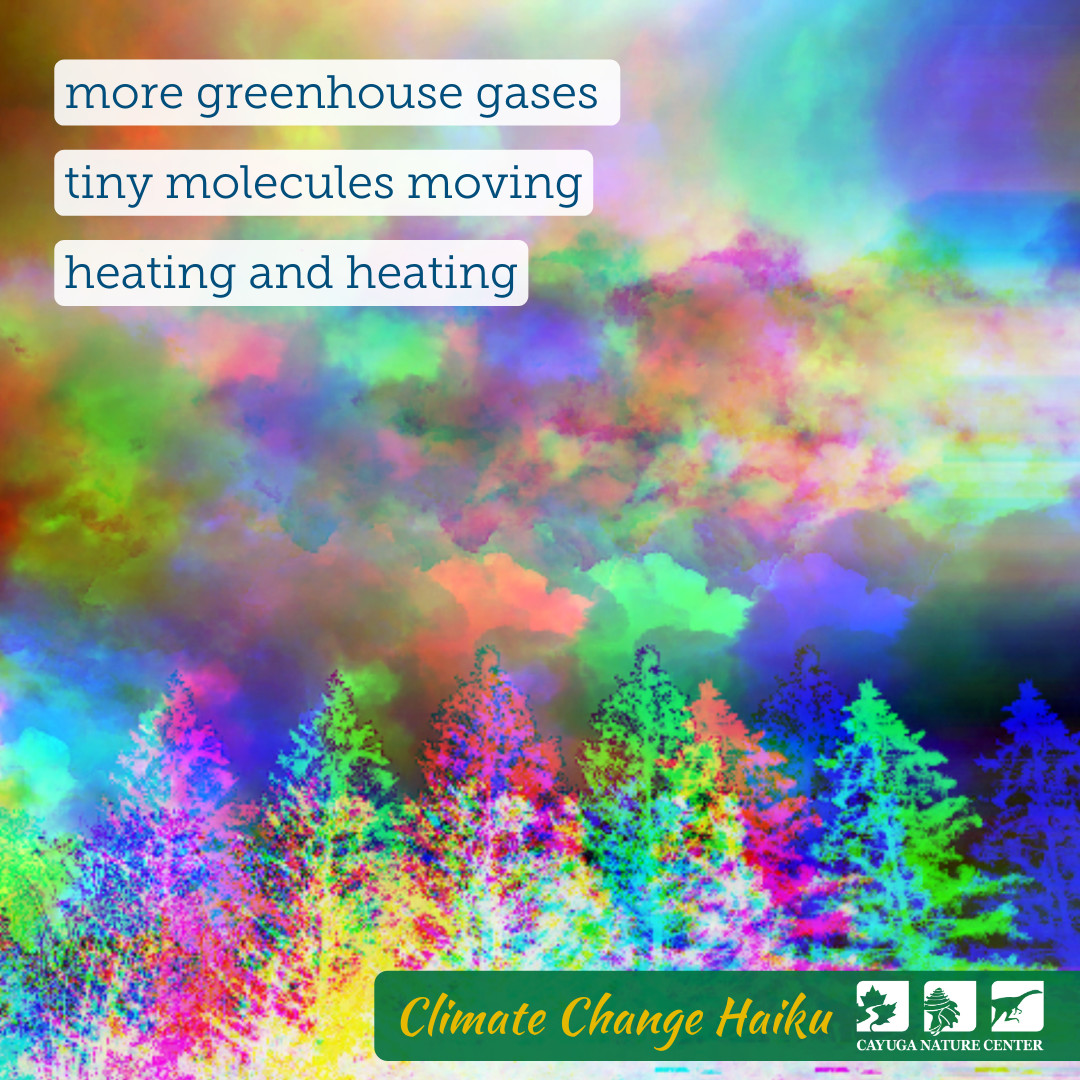
Greenhouse gases like carbon dioxide, methane, nitrous oxide, and fluorinated gases absorb heat from the Earth and vibrate and collide, raising the temperature of the atmosphere. The more greenhouse gases we put into the atmosphere, the hotter it will get unless we find a way to remove some of those gases.
Learn more about the greenhouse effect in the Museum of the Earth's online exhibit, Changing Climate: Our Future, Our Choice and in PRI's In the Greenhouse video series.
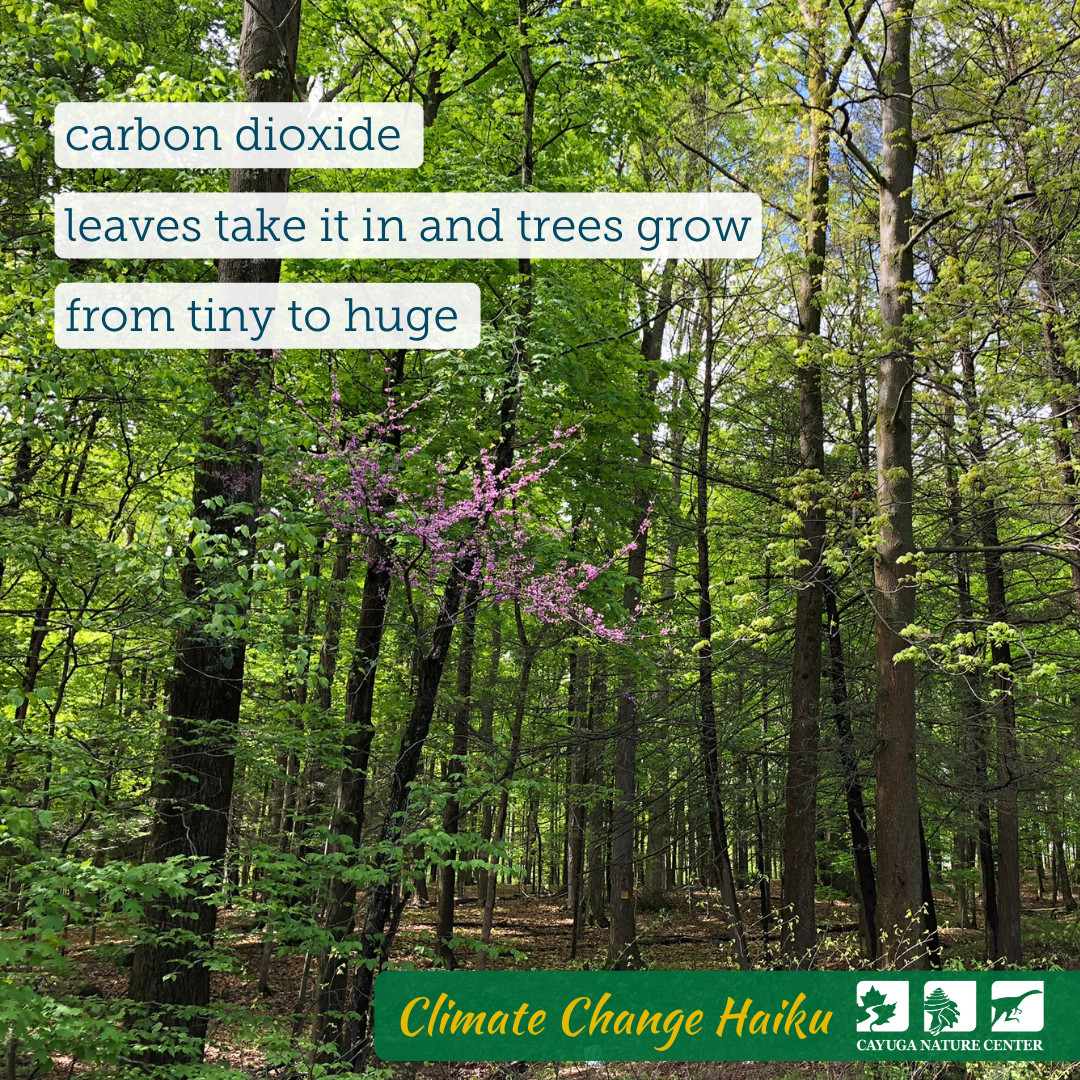
Trees take in tiny carbon dioxide molecules from the air and store carbon in their wood. We can't see this happening with our eyes, but we can measure it with instruments and we can see how a tree grows in size over time. Trees help draw down carbon dioxide in the atmosphere. If we take care of trees, they take care of us.
Learn more about the role of trees in taking in carbon dioxide in PRI's In the Greenhouse video series.
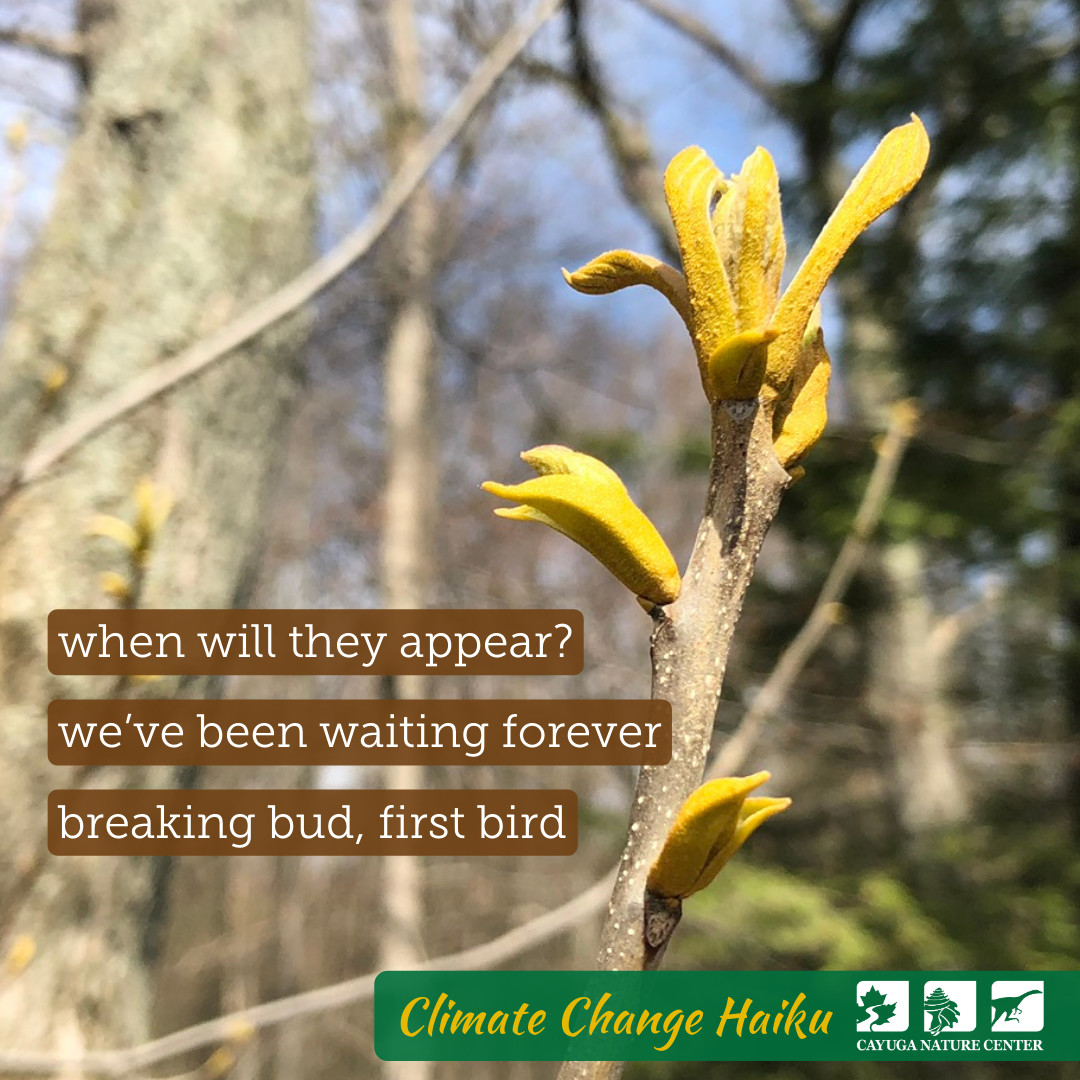
One can love winter but still long for spring! Scientists have found that springs are arriving earlier in New York State than they used to. For example, the leaf buds of many plants break open earlier now than they did in the 19th century.
Learn more about phenology, the science of the timing of natural cycles, in our blog post My Phenology Diary and in this study (Fuccillo Battle et al. 2022) that uses data from across New York State—including from the Cayuga Nature Center—to assess phenological changes from the early 1800s to the early 21st century.



